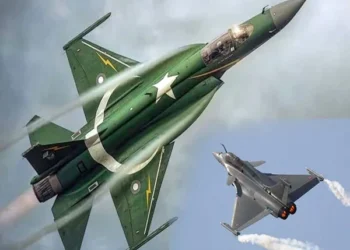In a significant escalation of tensions in the Middle East, Iran has launched a series of missile and drone attacks on Israel, targeting key military and intelligence infrastructure. The offensive, carried out under the banner of “Operation Sadiq 3,” is Iran’s most direct and aggressive response yet to ongoing Israeli military actions in the region.
Details of the Iranian Attack
According to Iranian state media, the Islamic Revolutionary Guard Corps (IRGC) and the Iranian Army’s Aerospace Force conducted the coordinated attack around 1:20 a.m., striking what Iran refers to as Israeli-occupied Palestinian territories. The primary targets included military intelligence centers and industrial facilities in Tel Aviv and Haifa.
The Haifa oil refinery, a critical energy facility, was hit and forced to cease operations. Reports confirmed the deaths of at least three employees at the site. Explosions were heard in multiple Israeli cities, and air raid sirens blared throughout the night, signaling an emergency situation.
Israel’s Response and Damage Control
The Israeli military acknowledged the attacks and stated that some of the incoming missiles had been intercepted by the Iron Dome missile defense system. Authorities urged citizens to take cover in designated safe zones as a precaution.
The Israeli Defense Forces (IDF) have remained on high alert since the beginning of the hostilities, and sources indicate that they are assessing the damage while preparing for further potential strikes. Although Israel confirmed intercepting several missiles, key infrastructure like the Haifa refinery sustained significant damage, signaling the intensity and precision of the Iranian assault.
Operation Sadiq 3: Strategic Message and Military Might
Iran has described its campaign of missile attacks as a retaliatory measure against Israeli military operations in Palestinian territories. The title of the operation, “Sadiq 3,” is being interpreted by analysts as part of a symbolic narrative reflecting Iran’s ideological and military posture.
Iranian state TV, quoting senior officials, stated that the Islamic Republic had reached a point where it would not tolerate what it termed “Zionist aggression.” One dramatic statement warned that “today will turn night into day,” indicating Iran’s readiness to sustain and escalate attacks.
Escalation Timeline and Regional Implications
This attack marks the fourth consecutive day of Iranian retaliatory strikes following what it described as acts of aggression by Israel. Tensions have been mounting over the past several months due to increased Israeli strikes in Gaza, Lebanon, and Syria—regions where Iran maintains strategic interests through allied militias.
The latest missile strike is expected to heighten already fragile regional dynamics, particularly with countries like the United States, Saudi Arabia, and the United Arab Emirates closely monitoring the situation. Western powers have repeatedly expressed concern over Iran’s growing ballistic missile capabilities and its regional proxies such as Hezbollah in Lebanon and the Houthis in Yemen.
Civilian Impact and International Reactions
In Israel, the impact on civilian populations has been severe. Thousands sought refuge in underground shelters as explosions rocked urban areas. Videos shared on social media showed panicked civilians running through the streets as air defense systems lit up the night sky.
While Iran claims its targets were strictly military, the damage to civilian infrastructure has raised alarms among human rights organizations. The United Nations has called for restraint, warning that a full-scale war between Iran and Israel could plunge the entire Middle East into chaos.
Meanwhile, U.S. officials have condemned the attack, urging both sides to de-escalate. President Joe Biden’s administration reaffirmed its support for Israel’s right to defend itself, while also calling on Tehran to avoid actions that could provoke a broader conflict.
Military Analysis: Iran’s Expanding Arsenal
Experts believe the use of advanced ballistic missiles and drones demonstrates Iran’s growing military capabilities. The precision of the attack on the Haifa refinery and the temporary paralysis of Israeli defense systems suggest an evolution in Iran’s tactical warfare.
The Revolutionary Guard’s ability to coordinate with the army for such a large-scale attack showcases Iran’s internal military cohesion and technological progress. With the use of Shahab-series ballistic missiles and Shahed drones, Iran sent a clear message about its deterrence capability.
Future Outlook: A New Phase of Conflict?
The Iranian strike under Operation Sadiq 3 represents a major inflection point in the Israel-Iran conflict. What was once a shadow war fought through proxies and cyber operations is increasingly shifting toward direct military engagements.
If the cycle of retaliation continues, experts warn it could ignite a broader conflict involving multiple nations across the Middle East. Both Iran and Israel have vowed to respond forcefully to each new escalation, creating a dangerous tit-for-tat scenario with no clear off-ramp.
For now, global powers are urging diplomatic channels to be reopened, even as military readiness across the region reaches a new high.
Conclusion: The World Watches Closely
Iran’s missile and drone attack on Israel marks a dramatic escalation in an already volatile region. With critical infrastructure destroyed, casualties mounting, and fears of an all-out war looming, the international community remains on edge.
As the situation evolves, the calls for restraint grow louder. But on the ground, both nations appear locked in a high-stakes confrontation that could determine the future of Middle East stability for years to come.

























